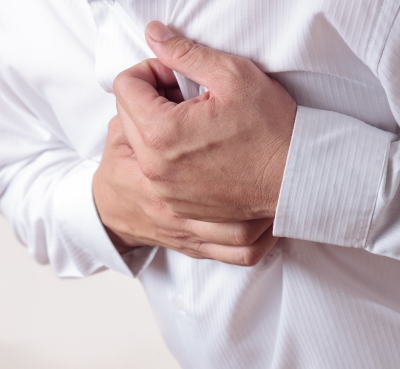If you’ve been anywhere near a naturopath or a health food store in the last five years, you will have probably come across the message that fructans are good for you. A few people have asked me how or if they are related to fructose and what I think of them.
In a nutshell, the answer is that (like most things) I am happy to eat fructans au naturelle (in the original vegetables that contain them), but I don’t want them added to everything else just to get a ‘healthy’ looking label. I will be avoiding things that have fructans added and here is why.
Plants convert sunlight to energy by creating sugars. The two primary sugar molecules are fructose and glucose. To store this energy, plants join these simple sugars together in long chains. Chains which are mostly glucose are called glucans.
Cellulose, the hard stringy indigestible bits of plants we usually call fibre is a glucan. Starch is another important glucan which we encounter most in our daily diet. It forms the foundation for most of the carbohydrates, we eat. Animals (like us) also store energy as glucans. When we have too much glucose in our blood, we create glycogen (a glucan) and store it around our livers as a short term supply of glucose (to get us through between antelope kills).
Chains which are mostly fructose are called fructans. Nobody knows why some plants store their sugar as fructans and others as glucans but researchers speculate that given the types of plants that do it, it might have something to do with drought tolerance. Fructans are most common in Onions and other tubers like Chicory but they are also in Barley, Wheat, Artichokes and Asparagus. They are present to some degree in about 15% of plants.
Fructans are less well known, but one that you might have seen popping up on the ingredients list of some foods is Inulin (yes, inulin NOT insulin). Inulin is a chain of about 60 fructose molecules and one glucose molecule.
Humans (and most other mammals) do not have the enzymes (chopping shears) necessary to cut up a fructan like inulin. We do have enzymes for sugar, fructose, glucose and starch, so when we eat those sugars, they get dealt with immediately in our small intestine (with disastrous consequences in the case of fructose).
But when we eat inulin it sails straight through our small intestine and becomes pet-food for the bacteria that inhabit our large intestine. Our little passengers love the stuff, chomping away furiously on it and converting it into fatty acids (which we then absorb into our blood stream) and gases (which we … well, you get the picture).
Because feeding gut bacteria encourages them to multiply, inulin is sometimes described as a prebiotic (something that increases the number of good bacteria in our gut). Prebiotics are different from probiotics (like Yakult) which are just more bacteria in a bottle.
Inulin has been very thoroughly researched because food manufacturers want to include it in many foods. All of the research to date suggests that at no point does the fructose get liberated by our digestive system. We just don’t possess the required cutting shears. Our gut bacteria do, but they use the fructose to fuel themselves rather than us.
Because we can’t digest inulin (directly at least), food manufacturers have managed to convince food regulators the world over (including Australia and the US) to allow them to describe inulin as fibre on food labels (rather than as a sugar, which is chemically what it is).
Manufacturers want to put inulin in our food for one very good reason. Health? No. Flavour? No. Marketing? Yes.
Inulin tastes slightly sweet (and so reduces the amount of other sugars required) but it counts as fibre rather than sugar on the label. This combined with the fact it can be advertised as a prebiotic makes the food sound healthier. An example of a food that uses inulin in this way is Bakers Delight’s Hi-Fibre Lo-GI White Bread.
Yoghurt manufacturers like Vaalia like to use it because it allows them to lower the fat content (on the label at least) without affecting the ‘mouth feel’. Inulin has a mouth feel similar to fat, so if it is included as a fat substitute they can use less sugar to compensate for the lack of fat. This gives the marketing advantage of being able to say the product is low fat, high fibre and low(er) sugar.
Diet purveyors like Tony Ferguson use inulin because it has the useful property of masking the aftertaste of artificial sweeteners and they can also promote the product as being a healthy fibre rich prebiotic.
In summary then, fructans are choc full of fructose but our digestive systems can’t get at it directly. Instead our gut bacteria digest it for us. But the fatty acids created by the bacteria do eventually find their way into our bloodstream. And some of the latest research (see the August 2008 edition of Pancreas Journal – there’s a nice little stocking filler for Christmas) says that fatty acids released in this way may not trigger an appetite suppressing response (unlike normal dietary fat, which does).
This means that we could just be skinning the cat another way. Whether bacteria fill our arteries with fatty acids (when we digest fructans) or our liver does the job (when we digest fructose) is probably beside the point if neither of them trigger a hormonal response that suppresses our appetite.
I’m not happy that we know enough about fructans (and in particular inulin) to be certain that their effect on our bodies is not just as bad as pure fructose.
I’ll be avoiding foods that contain them. This doesn’t mean I’ll be avoiding onion and asparagus. I figure we are adapted to eat fructans in the small quantities contained in those foods (just as we are adapted to eat whole fruit). But I will be avoiding bread, yoghurt and anything else that includes Chicory, Inulin, Fructo-oligosaccharide or FOS on the label as an added ingredient.













Recent Comments